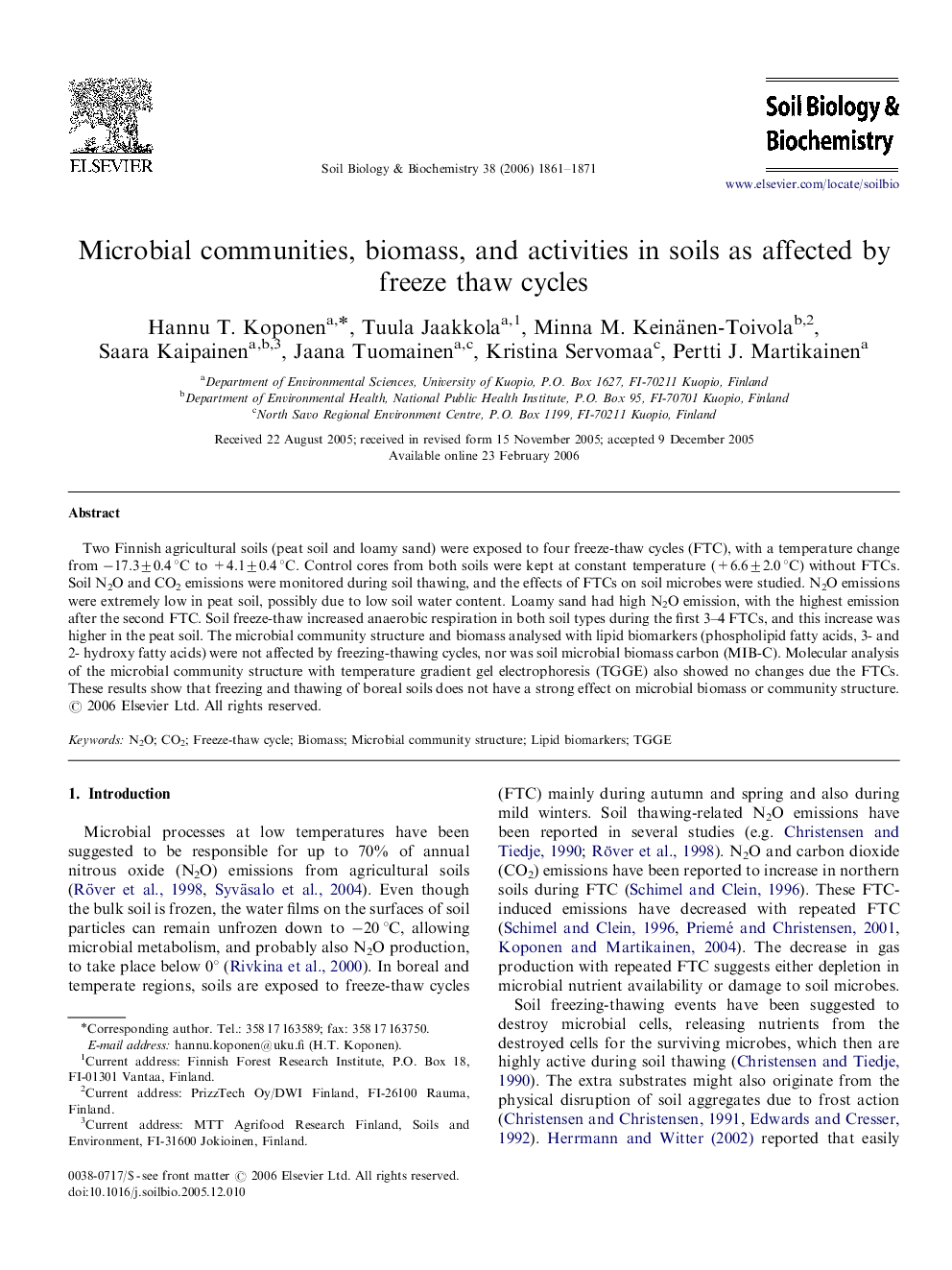| Article ID | Journal | Published Year | Pages | File Type |
|---|---|---|---|---|
| 2026589 | Soil Biology and Biochemistry | 2006 | 11 Pages |
Two Finnish agricultural soils (peat soil and loamy sand) were exposed to four freeze-thaw cycles (FTC), with a temperature change from −17.3±0.4 °C to +4.1±0.4 °C. Control cores from both soils were kept at constant temperature (+6.6±2.0 °C) without FTCs. Soil N2O and CO2 emissions were monitored during soil thawing, and the effects of FTCs on soil microbes were studied. N2O emissions were extremely low in peat soil, possibly due to low soil water content. Loamy sand had high N2O emission, with the highest emission after the second FTC. Soil freeze-thaw increased anaerobic respiration in both soil types during the first 3–4 FTCs, and this increase was higher in the peat soil. The microbial community structure and biomass analysed with lipid biomarkers (phospholipid fatty acids, 3- and 2- hydroxy fatty acids) were not affected by freezing-thawing cycles, nor was soil microbial biomass carbon (MIB-C). Molecular analysis of the microbial community structure with temperature gradient gel electrophoresis (TGGE) also showed no changes due the FTCs. These results show that freezing and thawing of boreal soils does not have a strong effect on microbial biomass or community structure.
